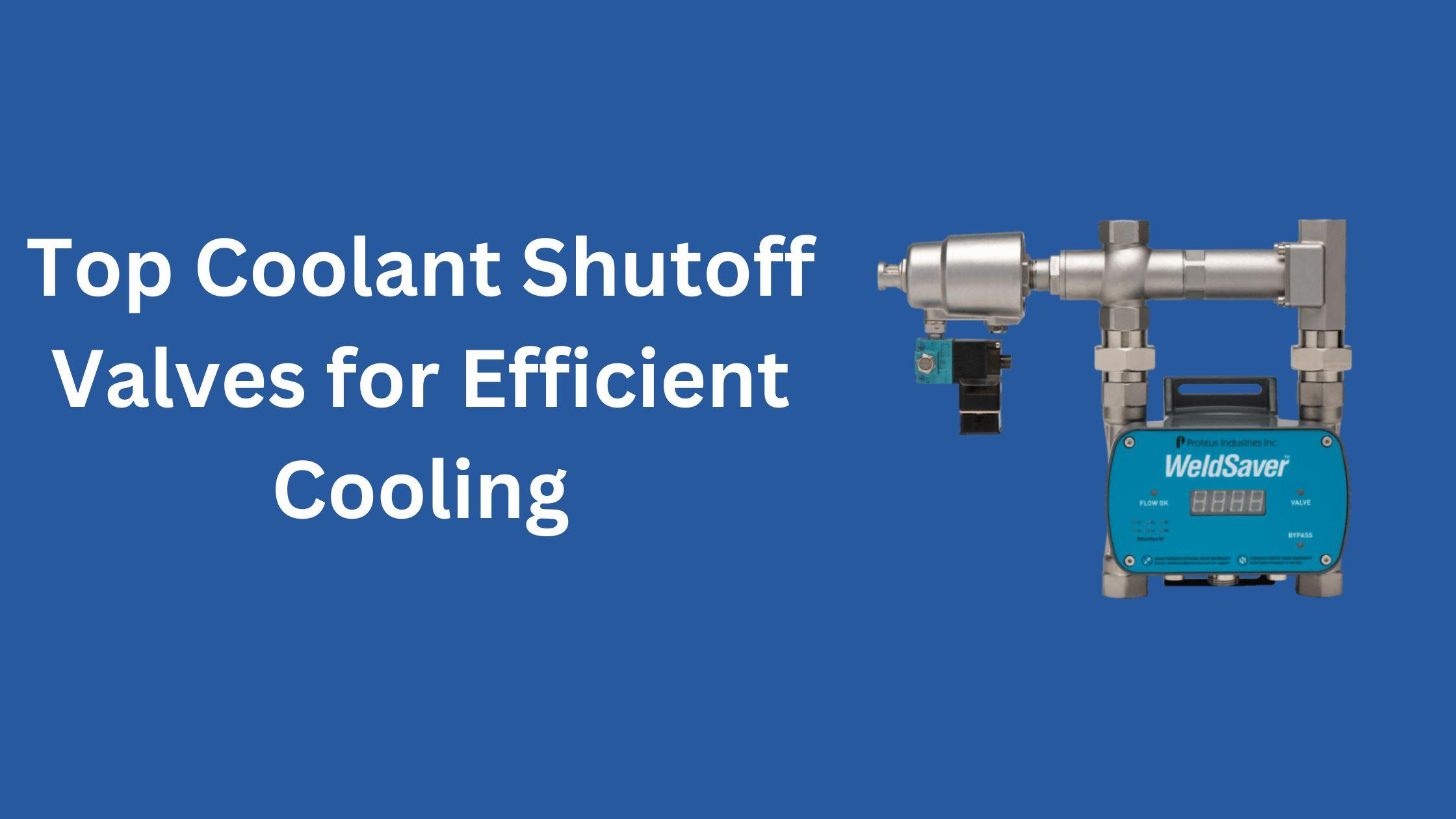Top Coolant Shutoff Valves for Efficient Cooling

Adequate cooling is essential for the smooth operation and longevity of any engine or industrial system. Among the various components involved in the cooling process, the coolant shutoff valve plays a critical role in managing the coolant flow, ensuring optimal temperature regulation. This guide delves into the best coolant shutoff valves available, their benefits, and why investing in a high-quality valve is crucial for maintaining system efficiency.
Understanding Coolant Shutoff Valves
A coolant shutoff valve is designed to control the coolant flow in an engine or machinery. By regulating this flow, the valve helps maintain the appropriate operating temperature, preventing overheating and potential damage. These valves can be manual or automatic, each offering distinct advantages depending on the application.
Manual coolant shutoff valves are typically hand-operated and allow precise control over the coolant flow. They are ideal for systems where manual adjustments are feasible, and cost-effectiveness is a priority. On the other hand, automatic valves use sensors and actuators to adjust coolant flow based on real-time temperature readings, offering greater convenience and accuracy.
Key Features of High-Quality Coolant Shutoff Valves
Several features should be considered when selecting a coolant shutoff valve to ensure optimal performance and durability. Key features include:
- Flow Rate Control: The ability to precisely control the flow rate is crucial for maintaining the desired temperature. Look for valves with adjustable flow settings.
- Compatibility: Ensure the valve matches your system's coolant type and temperature range. Some valves are designed specifically for high-temperature or high-pressure applications.
- Ease of Installation: An easy-to-install valve can save both time and reduce labor costs. Consider valves with straightforward installation processes or those that come with clear instructions.
Benefits of Upgrading Your Coolant Shutoff Valve
Upgrading to a high-quality coolant shutoff valve can offer several benefits:
- Enhanced Efficiency: A well-functioning valve ensures that the coolant flow is precisely regulated, improving the overall efficiency of the cooling system.
- Extended Equipment Life: Effective temperature control minimizes engine component wear and tear, extending the lifespan of the equipment.
- Cost Savings: Investing in a reliable valve can reduce maintenance costs and prevent costly repairs associated with overheating and damage.
How to Choose the Right Coolant Shutoff Valve
Selecting the proper coolant shutoff valve involves assessing your needs and system requirements. Consider the following factors:
- Application: Determine whether you need a manual or automatic valve based on your system's complexity and operational needs.
- Temperature and Pressure Ratings: Ensure the valve can handle your system's temperature and pressure requirements.
- Maintenance: Choose a valve that requires minimal maintenance and has readily available replacement parts if needed.
Installation and Maintenance Tips
Follow these tips:
- Installation: Follow the manufacturer's instructions carefully. Ensure all connections are secure and the valve is aligned correctly to avoid leaks and ensure efficient operation.
- Regular Checks: Periodically check the valve for signs of wear or damage. Regular maintenance helps address issues before they escalate into major problems.
- Cleaning: Keep the valve clean and free of debris to ensure smooth operation. Use appropriate cleaning agents and avoid harsh chemicals that could damage the valve.
Conclusion
Investing in a high-quality coolant shutoff valve is crucial for ensuring efficient cooling and extending your engine's or machinery's life. By understanding the key features, benefits, and maintenance information, you can make an informed decision and choose the best valve for your needs. Selecting the correct manual or automatic valve and proper maintenance will boost your system's performance and reliability.
Frequently Asked Questions
Q1: What is the primary function of a coolant shutoff valve?
A1: The primary function of a coolant shutoff valve is to control the flow of coolant in an engine or machinery. The valve helps maintain the optimal operating temperature by regulating the coolant flow, preventing overheating and potential damage.
Q2: Can a coolant shutoff valve be installed on any engine?
A2: Yes, a coolant shutoff valve can be installed on various types of engines and machinery. However, ensuring compatibility with the specific engine type and coolant requirements is essential. Always check the manufacturer's specifications before installation.
Q3: How often should a coolant shutoff valve be replaced?
A3: The frequency of coolant shutoff valve replacement depends on its usage and condition. Valves should typically be replaced if they show significant wear or failure.
- Art
- Causes
- Crafts
- Dance
- Drinks
- Film
- Fitness
- Food
- Παιχνίδια
- Gardening
- Health
- Κεντρική Σελίδα
- Literature
- Music
- Networking
- άλλο
- Party
- Religion
- Shopping
- Sports
- Theater
- Wellness


